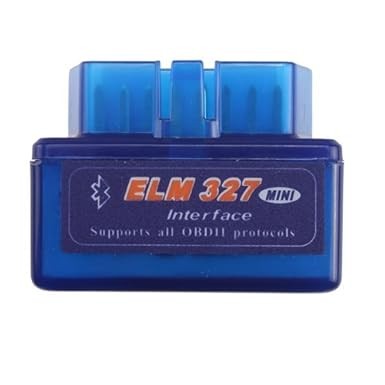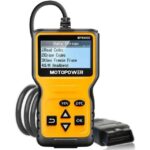Knowing your engine’s coolant temperature is crucial for preventing overheating and potential damage. While traditional gauges require installation, an Obd2 Coolant Temperature Gauge offers a simple plug-and-play solution. This article explores various affordable options for monitoring your engine’s coolant temperature using your vehicle’s OBD2 port.
Affordable OBD2 Coolant Temperature Gauge Solutions
For those seeking a straightforward way to monitor coolant temperature, an OBD2 scanner paired with a smartphone app offers a budget-friendly solution. A Bluetooth OBD2 adapter, available for around $12, can transmit data to apps like “Torque” on Android devices. This setup allows you to transform your smartphone into a comprehensive digital gauge cluster, displaying real-time coolant temperature readings alongside other vital engine data.
 alt text: a Bluetooth OBD-II adapter plugged into a car's OBD-II port.
alt text: a Bluetooth OBD-II adapter plugged into a car's OBD-II port.
An alternative for a dedicated, in-car solution is the ScanGaugeE. While priced higher at approximately $95, it offers a compact, permanently mounted display showing coolant temperature without relying on a separate device. Its robust design makes it suitable for demanding environments like rallycross.
Exploring Other Options: In-Line Adapters and Multimeters
Beyond OBD2 solutions, traditional gauges with in-line adapters provide another avenue for monitoring coolant temperature. These adapters allow for easy installation of a temperature sender without major modifications. Simply cut the coolant hose, insert the tee adapter, and connect the sender.
For a more versatile approach, a digital multimeter with a temperature probe can be utilized. By taping the sensor to the radiator hose, you can get a reasonably accurate temperature reading. While not as precise as dedicated gauges, this method offers a cost-effective way to monitor engine temperature.
Choosing the Right OBD2 Coolant Temperature Gauge
The best solution depends on individual needs and budget. The Bluetooth OBD2 adapter and smartphone app combination provides the most affordable option, utilizing existing hardware. For a dedicated and potentially more robust solution, the ScanGaugeE offers a compact, permanent display. In-line adapters and multimeters provide alternative methods for those comfortable with minor installation or seeking a multi-purpose tool. Ultimately, understanding your specific requirements will guide you toward the most suitable OBD2 coolant temperature gauge for your vehicle.


